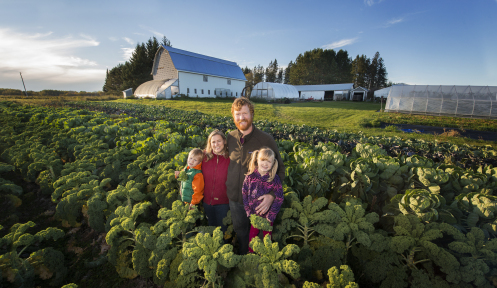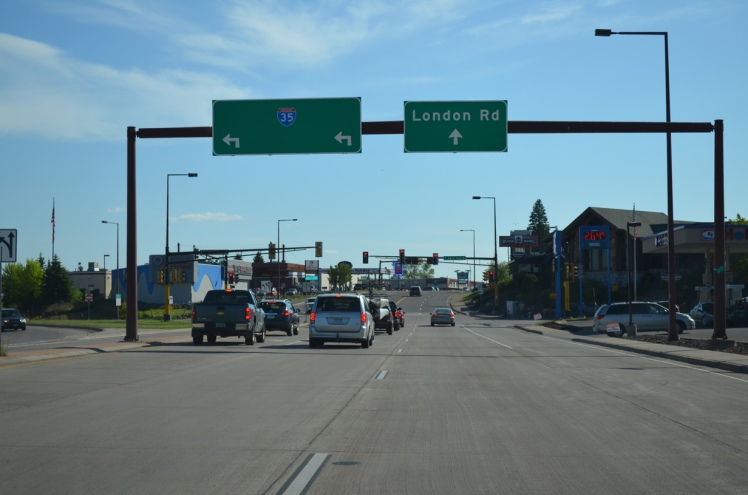I celebrated the first day of spring on my bicycle, delivering a dozen books to the Duluth Grill, and lingering a while. Later, after arriving home, I chuckled upon discovering the number one “news” story popping up on Yahoo. It covered (uncovered?) Brittney Spears’s christening of the new season by wearing a, “Teeny tiny yellow, string bikini.” Calculated, staged, and photoshopped to perfection, the image represents a worldview and conception of reality that has seduced millions…

I think my own festival of merriment in commemoration of Spring was more real, better connected to the land and community, and was therefore more satisfying…

I parted with a small percentage of my hard-earned profits by lingering over a scratch-made banana cream pie, indulging in locally roasted coffee, and by leafing through their newly released cookbook: The Duluth Grill Cook Book II. The read is surprisingly stirring and uplifting. As with nearly every encounter I’ve ever had at The Duluth Grill, the experience was enriching to the whole person: body, mind, and soul. A strong sense of hope and optimism fueled the long journey home, enabling me to easily pierce a chilly headwind coming in from the Lake.
The new cookbook is one-of-a-kind and worthy of your attention. I confess to never having cracked the binding of their first cookbook. They aren’t normally my thing. This one, however, grabbed me because it contains numerous short essays about some of the small, family-owned farms that supply a significant percentage of the eatery’s voracious appetite for locally grown food. There is a stellar profile of YKER Acres, their pork supplier, for example:

and of Northern Harvest Farm:

Paired with Rolf Hagberg’s top-notch photography, these stories about the hardy souls working their tails off to create a local food system are a tremendous addition. These small windows into their lives make the reader hunger for more, and are sure to increase your appetite for local food and also for a greater acquaintance with the producers who lovingly provide it (their own backs and bank accounts be damned in many cases).
Some of these back-to-the-landers were new to me. For example, Duluth Grill obtains its signature tea blend from Anahata Herbals, operated by Eric Ament. He is a husband and father of three young children, and makes a living by sourcing and harvesting tea! Eric is quoted in the book saying, “You’re spending four hours to harvest and you’re lucky to get a couple of pounds… How do I compete with large-scale well developed farms in countries where people are getting paid $2 a day to harvest?” HOLY MOLEY! Yes, that’s a good question, and something I’d like to continue exploring. How does somebody have the gumption and audacity to even try? Per the writeup, “The Backcountry Blend is harvested 100% locally and is made with labrador tea, sweet gale, cedar, rose hips, sumac berries, and raspberry leaf. Others are made with a blend of local and out-of-town ingredients.” I found myself wishing I had ordered the tea after reading about this crazy guy. I don’t think I’ve ever felt the slightest interest in tea before reading this, in fact!
Eric Ament’s plight mirrors the challenge faced by the entire small-scale agriculture movement. Robert Lillegard, the cookbook’s author, does an admirable job in telling the stories behind these producers without romanticizing them.
The Duluth Grill was Ament’s first restaurant account. Can you begin to appreciate the kind of boost this was to his business? How it must contribute to a degree of stability and balance in his life? I sure as heck can. I just happen to be one of the 100 individual vendors supplying the restaurant, and have sold exactly 71 books there since last summer. For a nearly unknown author like me, that is an enormous amount. In fact, the experience has been so encouraging that this one faithful partner has in all likelihood inoculated me with the fortitude required to keep me from quitting. I suspect that the impact has been nearly as beneficial and encouraging for the other 99 individual vendors. I happen to receive about 10% more per sale there than the industry standard for book retailers. The restaurant almost certainly goes out of its way to pay a fair price to their farmers as well. While there is certainly an altruistic element in play here, a key element of the Grill’s unique culture is that they intuit how a thriving local food system greatly benefits them in the end, as does a well-balanced local economy. The cookbook subtly touches on this by sharing the stage with farmers of all stripes.
Over here in Gilmore country I’ve largely given up on cooking, in part because the rest of the family is gluten-free. My wife handles virtually all the cooking, but could benefit from regular breaks. Recipe after recipe, paired with beautiful photographs of the finished product, give me hope. The vast majority of the offerings in this book are gluten-free, and have proven themselves to be enjoyable for more conventional eaters like me. Vegetarians and vegans will also have cause to celebrate with plenty of options for them, and meat-lovers shouldn’t be disappointed. It’s amazing to see how this restaurant has found a way to cater to each of these disparate groups, without promoting some sort of exclusive enclave that favors one over the other or any one-sided political agenda. The book reflects this universal love of food of all stripes. The stories and recipes inspire me to seek out high-quality ingredients and prepare something of value for my family. This need not be a chore, but should be a joy! That is the main takeaway from the book.

Effervescent optimism defined the long ride home. Areas of blight and ugliness throughout the gritty part of town and along the freeway and railway aroused feelings of hope for their potential, rather than disgust. Unused, vacant lots screamed out for their potential agricultural or even aesthetic value…

Cookbooks do not normally inspire such feelings, but The Duluth Grill is strongly vested in this community, right down to its very core. We all have a stake in the future of this place, because it is a catalyst for positive change right here in our own backyard.
It seems fitting that it is located right beside I-35. My ride home carried me alongside, over, and under the freeway. Eventually I rode past the very end of this 1,568 mile interstate that bisects the country from north to south, serving the heartland of America. Or perhaps it’s the beginning of the road. From this very spot you can travel—blissfully ignorant of the challenges facing America’s breadbasket— all the way to the Mexican border:

This freeway came to completion at a time when government policy, largely backed by consumerist impulses, favored enormous entities and conglomerates over the small, local, and inefficient. It was a time when we stopped caring about where our food came from, and had no knowledge of the people who grew it. We stopped cooking, ate out of boxes, and tore cellophane wrappers off microwaved “TV dinners.” We even ate fast food meals in our cars without stepping foot outside. Sounds crazy, but it’s actually true! Americans across the socioeconomic spectrum came to rely solely upon international corporations to feed us, even though they’ve proven time and again that their only care is for profits.
Slowly, surely, relentlessly, we are waking up. There is another way.

This picture was taken last Fall in the backyard of The Duluth Grill’s owner, Tom Hanson, where his staff of gardeners help to supply the restaurant with fresh produce (and even rabbits). You can read more about it in one of the most popular posts here on Ed’s Big Adventure: Inefficient, Crazy, and Utterly Delicious.
Another grand write up on what sustainable is really all about. You are showing me the way to a healthier live style while giving me a tour or my regional community. I know of no other doing this Eddy. You are a very valuable asset for our community. You have found your calling, or at least it feels like you have from my view.
Sent from my iPhone
Thanks so much, Mikey! Much obliged.
Hi Eddy, Enjoyed your blog and can relate to food being grown in our own back yards, my mom had a huge garden as we were growing up and we were all involved in canning the fruits of that garden along with canning peaches, pears, and applesauce every year. Larry and Mary as well as Dean and Carol still do the canning every year and it is so satisfying to see the jars of peaches, pears, applesauce, beans, corn,and carrots lining the shelves in the basement. I think what has happened to us all is that a lot of now work one to two jobs just to make ends meet and there is no time to spend gardening. Hopefully we can get back to living simpler lives and include some of the lost self sufficient ways of the past discarded for lack of time and energy.
A comment about the highways or specifically I – 35. I understand how you feel about the highways providing a way for our produce to be shipped from out of state and our produce not being local, however when we drive down to visit Rollo and Joan in Texas, I sure do appreciate the nice highway and it gives us the opportunity to see other parts of America, Canada, and south of the border. Sooo…I think it is a mixed bag of pros and cons.* SJR *
On Tue, Mar 22, 2016 at 1:54 PM, Eds Big Adventure wrote:
> Eddy Gilmore posted: “I celebrated the first day of spring on my bicycle, > delivering a dozen books to the Duluth Grill, and lingering a while. Later, > after arriving home, I chuckled upon discovering the number one “news” > story popping up on Yahoo. It covered (uncovered?) Britt” >
You bring up several worthy points. I do want to clarify that I am not suggesting that everybody should grow a large percentage of their own food. However, even a single tomato plant in a pot would be beneficial to nearly anybody. We can get just as much fulfillment out of sourcing our food locally, by getting to know our farmers and their land personally, and by having a stake in their success.
Also, the Interstate is indeed a double-edged sword. I agree. It’s also not going anywhere. I’m merely adding that into the conversation for illustrative purposes. Furthermore, I realize that it’s not practical for 100% of a region’s food to be purely local. This is ok. It’s the thrill of the hunt that matters. Striving to add more and more. The Duluth Grill is often featured as a model for others to follow, and they’re currently at roughly 33% local. Considering their volume and demanding nature of the business, this is fantastic. If they are capable of sourcing this amount locally, individuals can do so pretty easily as well. I think it’s a realistic goal. I’m not a bean-counter, myself. It’s more about integrating food consumption into joyful living, and building relationships with the people that supply it. Lots to be said here, but I’m running too long! Thanks for reading….